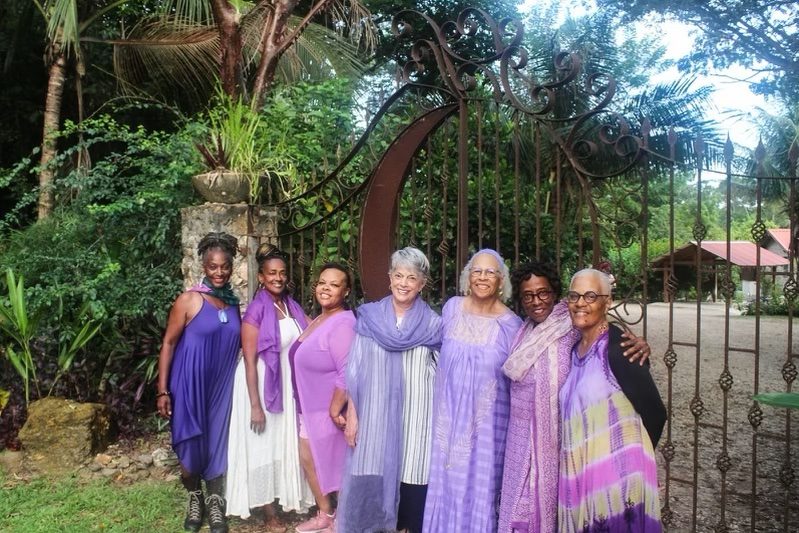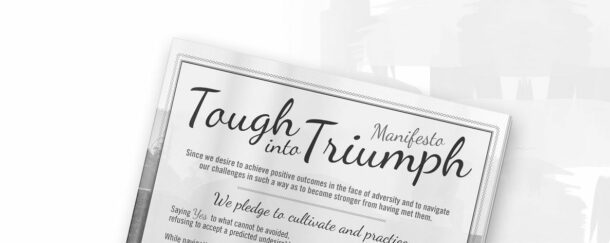Dancing
with Everything
Dancing On Behalf of Our Grieving Selves
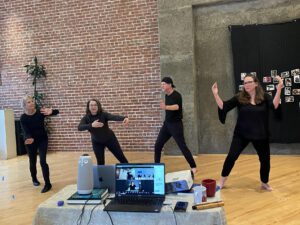 I spent the weekend in Oakland CA at InterPlayce, the home of the art-based improvisational system InterPlay, (an active creative approach to unlocking the wisdom of the body.) I’ve been a proponent, participant, practitioner, performer, teacher and altogether groupie fan of InterPlay since I was introduced to it in the early days of its development in 1992. Participating in this InterPlay Performance Workshop that focused on using the dancing, storytelling, singing, stillness forms to create a performance, in the moment and on the spot, took me back to the first time I ever witnessed this magical, transformational process.
I spent the weekend in Oakland CA at InterPlayce, the home of the art-based improvisational system InterPlay, (an active creative approach to unlocking the wisdom of the body.) I’ve been a proponent, participant, practitioner, performer, teacher and altogether groupie fan of InterPlay since I was introduced to it in the early days of its development in 1992. Participating in this InterPlay Performance Workshop that focused on using the dancing, storytelling, singing, stillness forms to create a performance, in the moment and on the spot, took me back to the first time I ever witnessed this magical, transformational process.
In 1993, according to the World Health Organization, approximately two million people were newly diagnosed with AIDS, raising the total since the start of the pandemic to more than 15 million. In the US, most of them were gay men. My son was one of them.
In addition to the fact that there were little-to-no effective treatments for the disease, Ken had been advised by the AIDS Outreach Center that, since he wanted to keep his job, he should tell no one, even his best friend about his diagnosis. They had lawyers that would help him get his job back, but the better path was for he and his family to keep his diagnosis a secret. This was the big picture of what our family was dealing with when we came together in the spring of 1994 from Texas, Oregon, and Southern CA in a hotel at the airport in San Francisco for a Aids, Medicine, and Miracles Conference.
There were 200 or so professional caregivers, physicians, nurses, social workers, alternative medicine practitioners, and patients. Dazed, and in and out of depression and denial, we were hoping for a miracle, and completely shocked to learn that, though the conference had been advertised for families, we were the only family members present.
There were helpful demonstrations and suggestions–acupuncture can alleviate the side effect symptoms created by western medicines; meditation practice offers relief for the anxiety inherent in facing a life-threatening future. But it was the lunch time presentation that stays with me to this day. Here we were, in a large gathering space, seated at tables, opening our sandwiches from their plastic wrappings as the lights came up on a performance space elevated slightly above us. The session was not to be a lecture or demonstration but a presentation by the Wing It Performance Ensemble, directed by InterPlay founder and improvisational artist Phil Porter. I had recently been introduced to InterPlay through its other founder, Cynthia Winton-Henry, a dancing minister, and I was amazed at our good fortune in being able to see the company perform.
The theme was AIDS and the group played with words we called out from the audience. They created dances, songs, and stories, on the spot and in the moment, around themes like ‘fear,’ ‘taboos,’ ‘health,’ ‘being gay’, ‘medicine,’ and of course, ‘miracles.’ As witnesses and audience members we were mesmerized as company members lifted the curtain of shame and silence to miraculously reveal details of the lives we were living. Later, when I learned more about the InterPlay system, I realized there was a name for what was transpiring. The artists were dancing, singing and storytelling on our behalf. They were doing one of the things the arts do best for mourners, and everyone else–affirming our experience and expressing for us what we need to have expressed in order to process our grief and gratitude for the experiences of our lives.
To Change Our World
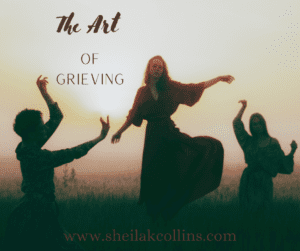 When I was in high school, I read a newspaper article about a new kind of therapy. What I knew about mental health therapy at that time was that it was an expensive individual process, often taking years, where a person worked on their own behaviors and attitudes with the help and guidance of a therapist. The goal was to become a better, more mature grown-up.
When I was in high school, I read a newspaper article about a new kind of therapy. What I knew about mental health therapy at that time was that it was an expensive individual process, often taking years, where a person worked on their own behaviors and attitudes with the help and guidance of a therapist. The goal was to become a better, more mature grown-up.
Given my mother’s erratic behavior, (partly caused by the overwhelming demands of working the night shift as a nurse and raising 6 children during the day) I often wished that she would go to therapy or that I could go, but neither of those things were the least bit likely. So, when I heard about this new field of Family Therapy where the therapist’s focus was not on the individual but on the relationship between family members, where the “patient,” if you will, was the family system itself, I became excited.
The idea that, with a therapist’s consultation, family members could change the system of rules and communication patterns which operated outside of their awareness so that the lived experience of family life could became more satisfying–this seemed a real game changer. Though my family of origin never took advantage of this new method, becoming a family therapist did become a career path for me years later, but I still remember that moment as one of the first, “glimmer of hope” moments of my life. At the time it seemed that help for me and the members of my dysfunctional chaotic family could be on its way.
Becoming a social worker fit right in with this notion that individuals are inseparable from their network of relationships, and caused me to put women together in groups, to receive the support from one another as they grieved their losses. The culture of the group itself helped the individual women to avoid shutting down or moving away from the discomfort of their grief. As cultural messages encourage. Using the arts of storytelling, dancing, and drama enactments, much of what I had learned from my professional dance and theater background, the women, with my help, taught each other that hanging in there with grief was well worth it.
Now I’ve written a book about grieving as an art we need to get good at, and how using the arts is what helps us do that. So, I realize, I’m still trying to change the rules and communication patterns of the system we are all entangled in, so we can support one another through the many episodes of grief and loss that are hallmarks of the human condition. Stay tuned to find out how I do with this latest chapter in my “changing our world” business.
Pittsburgh Understands the Art of Grieving and Practices it Well
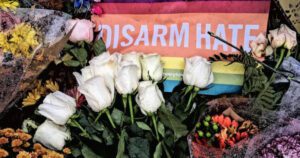 It was the spring of 2018. A group of leaders, educational institutions, and non-profits in Pittsburgh began working together to bring to Pittsburgh some of the 70 restored string instruments played by Jewish musicians before and during the Holocaust. They wanted people of all ages in the Pittsburgh community to hear the stories of the past to shine a light on the future. Their intention was that by connecting to these Violins of Hope: the stories of bigotry, racism, and intolerance and the stories of perseverance through those hard times would help people appreciate how the human spirit can overcome even the most daunting of circumstances. This landmark community project, centered on the valuable lessons of diversity, equity, and inclusion was titled, for this city of many bridges: Tuning Out Prejudice: Building Bridges That Last.
It was the spring of 2018. A group of leaders, educational institutions, and non-profits in Pittsburgh began working together to bring to Pittsburgh some of the 70 restored string instruments played by Jewish musicians before and during the Holocaust. They wanted people of all ages in the Pittsburgh community to hear the stories of the past to shine a light on the future. Their intention was that by connecting to these Violins of Hope: the stories of bigotry, racism, and intolerance and the stories of perseverance through those hard times would help people appreciate how the human spirit can overcome even the most daunting of circumstances. This landmark community project, centered on the valuable lessons of diversity, equity, and inclusion was titled, for this city of many bridges: Tuning Out Prejudice: Building Bridges That Last.
Then, in the fall of that year on Saturday October 27th a gunman stormed the Tree of Life Synagogue in Pittsburgh, home to three congregations of Jewish worshipers, killing eleven people and injuring six. It was the worst attack on Jews in the history of the US.
In the intervening years our Pittsburgh community has done much to be become “Stronger Than Hate,” the slogan that emerged early in the community’s healing process. Immediately, the larger community rallied around the traumatized Jewish community holding candlelight vigils in the streets of the “Mr. Roger’s Neighborhood” where the horrific event took place. During the first month, volunteer mental health professionals assisted persons impacted directly by the event by offering Critical Incident Stress Debriefings at the Jewish Community Center.
The following Friday, as Jewish people in the Pittsburgh area entered their temples and synagogues for the Shabbat services, they were greeted by scores of non-Jewish neighbors holding lighted candles, offering solidarity by standing in silent support.
.
Later local leaders met with staff from resiliency centers around the country to gather lessons learned and best practices for community support while federal and city government organizations and community groups met weekly for nearly a year. This led to the creation of the 10.27 Healing Partnership which continues to provide resources and opportunities for commemoration and commemorative volunteering. A 2023 Commemoration Ceremony will take place at 3 pm Oct 27th in Prospect Drive in Schenley Park. All are welcome.
On Oct. 29th a series of volunteering opportunities in memory of those who were killed on 10/27 will take place across Pittsburgh organized by Repair the World Pittsburgh. “We remember the ideals, character, and values of the 11 people killed on 10/27 through service.” https://1027healingpartnership.org
Now in this season of the 5th anniversary of that attack, the exhibit of the Violins of Hope of Greater Pittsburgh is finally open, offered free to the public from Oct. 7 – November 21st at Posner Center, on the campus of Carnegie Mellon University. Many of these violins are inlaid with a Jewish Star indicating they are symbols of Klezmer and other Jewish traditions that were all but destroyed during the Holocaust. On the website of Amnon Weinstein, the owner and violin maker who restored many of the violins, states, “All instruments have a common denominator: they are symbols of hope and a way to say: remember me, remember us. Life is good, celebrate it for those who perished, for those who survived. For all people. https://violinsofhopepittsburgh.com/
Free Online Event on the 5th Anniversary – Oct. 27, 2023, 3 – 3:45 pm eastern time
Join 60 Minutes correspondent Jon Wertheim as he interviews Mark Oppenheimer, author of Squirrel Hill: The Tree of Life Synagogue Shooting and the Soul of a Neighborhood, the definitive book about the attack. They will discuss the murders and the aftermath, including the trial, the sentencing, and the fate of the building. Reserve your tickets now. https://www.aju.edu/events/five-years-later-reflecting-tree-life-synagogue-tragedy
How to Grieve War and its Atrocities
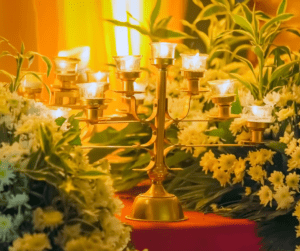
Practicing the art of grieving throughout the years and using the arts to do that, has continually offered me lessons and learnings not available through any other method. A profound example are the lessons I learned in how to grieve when war was declared in Israel.
I was out of the country, off the grid so to speak when war came. It was a text from a student who lives in Israel and who regularly attends my online Friday morning class that alerted me. I knew that David and his wife had moved to Israel from Pittsburgh relatively recently to be close to children and grandchildren so I thought that many members of his family could be at risk. So, on my trip home, through airport lounges and while seated on several planes, I closed my eyes often and sent compassion and peace to David and his family and all those living in harm’s way.
Seeing David’s face on the screen brought instant relief and joy as he connected with us on zoom for the class. He described that he had learned about the conflict when he was at the synagogue. Everyone was sent home to shelter in the sealed off rooms that most apartments and homes in Tel Aviv have, so he and his family were feeling safe. When we played our “I could talk about …” game, David mentioned he could talk about how good it felt to be greeted with “soft tones and smiles and he could also talk about his deep desire for ease.” He couldn’t stay to the end, but the group decided to finish our time together by dancing on his behalf, which is the InterPlay form we consider a prayer.
Looking up at the list of songs on my play list to select one to accompany our dancing for this occasion, the song “Kinder “by the acapella singing group Copper Wimmin, caught my eye. I was especially drawn to the album’s title, which I had never noticed before, “The Right to Be Here.” A strong kinesthetic signal in my body confirmed this was the song for this occasion. As the other participants and I followed and lead one another through the dance, the song took me to a place that its lyrics suggested. In the face of horrific war, injustice, fear, and death, “I decided to be happy, I decided to be glad, I decided to be grateful, for all I ever had.” We felt those sentiments and sent them to David.
Later that afternoon, I realized how good I had been feeling since the morning visit with David and dancing on his behalf. I questioned whether feeling good was the right response to the difficult situations that people I know and people I don’t know are being faced with around the globe. Just about then, a notice came into my email box to join a Community Vigil for Our Collective Pain, sponsored by one of my favorite organizations, Reimagine. Their mission is to host programs that reimagine loss and channel life’s challenges into meaning and growth. This opportunity seems just the right one for me on this occasion.
I joined 146 other people online as the organizers made clear about what kind of space this was to be – “to unite in sorrow as our compass points towards mourning loss and widening our hearts with love.” They were clear also; about what kind of space, it was not. It was not “a blaming space, a religious space, a political space, or a solution space.” While the complexities of this world-shaking event include elements of all of that, we were intent on grieving our collective pain.
Musician Phoenix Song greeted us by playing the flute, as a visual of a flower adorned altar was interspersed with her image on our screens. The director outlined the ceremony and invited us to light a candle in the spaces where we were coming in from around the world. Several participants repeated the line, “In lighting our candles, we mourn division, terrorism, violence, war, trauma, hatred, and all that is disconnected from love.”
Phoenix Song lead us in a meditation ceremony involving chanting 3 ahs for ourselves, 3 ahs for one another, and three for the world and those affected by the conflict beyond our screens. We repeated chanting these ahs to send loving kindness, then compassion, then joy, then ease, and then equanimity.
When we extinguished our candles, several people repeated the line, “we release light into our world to keep alive hope and the memories of those we honor, today, tomorrow and for the rest of our lives.”
The session ended in breakout rooms, and I was partnered with a man from Australia. He mentioned that news of this war was coming to his family as they are in mourning for his wife’s sister who had killed herself a few weeks ago. I expressed my condolences to him and his family realizing again that personal and family loses continue to occur and overlap with the larger societal ones.
That evening I played the song again for myself and moved to it to reinforce those decisions that the song had had me make, “I decided to be happy, I decided to be glad, I decided to be grateful, for all I ever had.” Instead of asking myself, how can you be happy when so many in this world are suffering, the question needs to be how can you not keep present to what everyone in the conflict is hoping for, for themselves, their families, and their communities? Could it be the obligation of those of us not living in the center of the storm to keep alive the loving peaceful energy that we need to get us all there.
Check out the Reimagine website https://letsreimagine.org/
Another Visit From a Butterfly
I only had one assignment from my writing coach when I left Pittsburgh last week to spend 5 days in Belize at a women’s retreat. My intention was to step away and have some time for reflection, but our project is at the place where we need to establish a launch date for my upcoming book. Since the woman who was organizing and leading the retreat is a numerologist, my writing coach Amanda suggested I consult with her in choosing that date. I appreciated that encouragement as it helped quiet that ultra-analytical voice in my head that tells me that this plan is way too “woo-woo.”
I do trust my friend and advisor, LaVerne Baker Hotep, whom I’ve known for 17 years, and her 30+ years of study and experience in understanding the ancient language of numbers, spoken, and understood by numerologists in all the world’s cultures. When the 9 numbers or symbols configure and reconfigure with the symbol 0 they provide us with a deeper understanding of ourselves and the cycles and times in which we are living. Laverne’s way of explaining it is that numbers are symbols that inform us about vibrations, and if we want something to move, it helps to be in alignment with our own vibrations and those of larger realities. As a person who has suffered from what my daughter called, “being ahead of my time,” my intention for this new creation is for this book to enter the larger world at the most opportune time for it to flourish and reach its intended audiences.
Laverne and I are seated at a table on a covered patio beside a pond with a view of the green overarching canopy of the Belizean rain forest. Butterflies, dragonflies, and sounds of bird calls flutter in and out of our awareness as we converse. We each have a large beach towel on our laps, partly to wipe away the sweat dripping down our faces, and partly perhaps, to provide us some encouragement, that when this consultation is finished, we will be able to put our toes, perhaps our whole bodies in the pond’s cold, just down from the mountaintop water.
In the workshop that preceded our conversation LaVerne had shared the characteristics of each number by using the analogy of planting a flower. #1 is the start, the seed is planted. (The book is written,) #2 It’s about relationship. All is in the dark, but a lot is happening in relationship to sun and water and to the person who weeds. It’s about relationship, and (about the collaboration with the village it takes to get a book out.) #3 is the joy bringer. Something comes up out of the ground and begins to spread out.
We learned that years have numbers. We are all in a 7 year now which is a going inward time. Retreating, renewing, as we women Laverne has gathered together are doing now. We can confirm this by adding all the numbers that make up this year’s date. (2023) 2+0+2+3=7. I get excited to realize that next year, 2024 will be an 8 year, a taking on of big things by empowering others, a balancing of material and spiritual elements. (2024) 2+0+2+4=8.
Starting with the practical, I suggest that February and March seem strong potential months for the launch given, that by then, we’re past the holidays. “Several people have suggested, February 14th, Valentine’s Day,” I tell Laverne and we both laugh when I remind her “you know how I hate those lacey heart-shaped valentines and the reminders of grade school, and all those hurt feelings when somebody got left out.”
Months have numbers, as do people, and combining them, Feb is the second month, and my number which LaVerne calculates is a two throughout all of 2024 means 2+2 = 22 then adding those 2+2 =4. The coming month of February for me becomes a 4. “That’s a great prep month where you are getting things done on the material plane. Laying a foundation, it’s a “get-her-done” month,” Laverne says.
Moving to the next month, she says, and I write it in my journal, “March is a 5 month.” Just then, a yellow butterfly swoops down low enough to touch LaVerne on the top of her head before flying away and I look again at what I’ve written. I say, “My daughter Corinne’s birthday is March 5th, and when I say that– a shiver, a movement moves upward throughout the trunk of my body. Doing the numbers on March 5th 2024–comes to a ten – the ultimate number.
Now its handy that I have a beach towel on my lap so I can wipe at the tears streaming down my face. The tears are propelled by remembering that I had placed a butterfly jewelry piece on the altar as we started the retreat, that it had been made by an artist using the drawing of a child being treated for cancer at MD Anderson, remembering that Corinne had given it to me on my birthday, 20 years ago, after she had traveled the entire length of the hospital campus pushing her infusion pole to the gift shoppe and back in order to purchase it. I will honor her and the anniversary of her 62nd birthday by launching The Art of Grieving: How Art and Artmaking Help Us Live Our Best Lives Now on that day.
LaVerne and I do eventually get our feet wet in that cold water, while a dragonfly lingers and lounges so long on a nearby leaf, she’s able to get several photos of it. Turns out Laverne and I are both #7s which in the language of numerology means that in order to bring things out that are hidden, we rested.
Estrangements in Work and Career

Forty percent of people will lose a job at least once in their lifetime and 23% of people will lose a job three or more times, according to data from Intoo and the Harris Poll. In being fired, laid off, or furloughed, 73% of people will experience anxiety. This easily understandable anxiety may be increased or decreased in intensity depending on how much money you have in savings, whether this loss also means loss of your health insurance, or a need to relocate to a place with more opportunities, and what kind of connections and skills you have, in order to secure another position. It also matters if the industry you are in or the national or global economy is expanding or contracting, or if the cost of living is rising. But let’s shine a light on something mostly overlooked regarding career downturns and job losses–estrangement, that loss of belonging.
Freud called Love and Work, “cornerstones of our humanness.” Many people spend at least as much of their awake time at work as they do outside of it. Social relationship networks form around work assignments, identities are forged and reinforced around job titles and acquired skills. So, to no longer be on friendly terms, to be escorted out of the building by security, to have lost closeness and affection and the support of co-workers, perhaps respect from members of your own profession, is to be suffering estrangement. As with every type of loss, to grieve it, it’s important to be able to name it.
The year was 1997. Our youngest son Kenneth had died in June on the summer solstice, and the sale of our family business was finalized in mid- July of that same year. As we were signing the papers, the owner/manager of the company who purchased us, who happened to be a social worker said, “So much grief, Sheila. Seems like a lot, all at the same time.” It was a lot. A lot that needed grieving.
Changes in the payment structures in the healthcare industry, referred to as “managed care” had made it necessary to become part of a larger organization to be able to stay in business. Our behavioral health care clinic, Iatreia Institute for the Healing Arts had been, for the first 5 years of its operation, a dream come true for my husband and me, a place to birth something new after I failed to get tenue at the university, despite an 8-1 vote in my favor. Its second 5 years of operation, became an example of the nightmare dreams can sometimes turn into. Everything became harder, and the therapists who worked for us had trouble accepting the sea change that had transpired in the marketplace. A change that eventually meant it took 42 steps or behaviors to be completed by a much larger staff, between the time a client first called for an appointment and when we would eventually get paid. The service itself was right in the middle. If the steps were done out of order, no preauthorization, no payment.
The January this transition happened in the insurance industry in our region of the country; the social work intern I was supervising nailed it when she came back from her Christmas break. “It feels like I left the best, close to heavenly field placement anyone could ever have, and returned to one that must surely be in hell.” “You get an A,” I told her.
It is customary for the leadership of a company to stay on for several years after being acquired, and we did, but since the company had little idea of what my role had been in making the business something they wanted to purchase, and they had no women in leadership roles at that time, there wasn’t a place that they or I felt, I truly belonged. After 18 months of their trying to run it without listening to someone who knew what it took to build it, they did ask if we wanted to buy the clinic back. We respectfully declined.
Between the Worlds

Not only do we not “practice dying,” as Socrates advised his students, but most people in western culture know very little about the process of dying, and how to be with someone when that is what is transpiring. Of course, not all deaths can be accompanied, many happen suddenly and without warning from an accident or, unexpectedly, a person dies in their sleep or from a stroke or heart attack. The dying process then can be nearly instantaneous. As my beloved 83-year-old Auntie started across the room, she was making a joke about the piano playing pitcher for the Tigers who had just won the pennant. Before she got to the other side of the room, she had collapsed and was dead before her body reached the floor. That was the gift that she did not have to deal with serious disabilities before she died. But for those dying of diseases like some types of cancer, it can be a gift to be able to comfort and be comforted, to express appreciations, to say good-bye, and to live close to whatever you call the Ultimate Reality, in the liminal space and time referred to as “between the worlds.”
It’s been nearly 30 years since my friend Rose called from a hospital in Nebraska to say that “the cancer had spread everywhere” and that she was dying. Later she extended an invitation, “Come and be with me while I do this, and then I will be with you when it’s your turn.” “How could that work?’ I thought, but I didn’t say that. I flew to Nebraska from Texas, but not before calling my native American teacher and friend Glenda Taylor to engage her as my backup coach. I didn’t know much, but I knew I needed support for this caregiving/health advocate role.
In those days before you could google your questions, one of the things we don’t know was about the expected timing of the dying process. Along about the 4th or 5th day that we were together, Rose said, “This seems to be taking longer than I thought it would. How does it seem to you? I agreed with her perception, but I thought it might be like when life is coming in. My delivery nurse mother used to say, “No matter what the calendar or the numbers say, babies come when they’re ready to come.”
There is a limit to how long one can remain pregnant and there are limits and stages to the dying process as well. Medical experts say that for the 3 weeks or so of the pre-active dying phase, a person usually detaches from social activities and spends more time sleeping. This was true to some extent, but when Rose and I we were together in her hospital room, when my son Ken lay in the high-ceilinged living room of our home we’d turned into the dying room, and for our daughter Corinne, when her hospital bed occupied the den of her family’s home, there was a lot of life affirming social activity and insightful conversations.
Some people refer to the Ultimate Reality as Energy and the energy in those spaces was palpable. One woman delivering flowers commented, “It’s hard to leave this space, there is so much love here.” I suspect that it has to do with what Glenda refers to as “going into ceremonial time,” a time when past, present and future can be perceived simultaneously.
Things got done–like when Rose’s women friends visited the hospital in the evenings, and with her consultation completed a project she had started, planning an upcoming State-Wide Women’s Healthcare Conference. Ken experienced reunions with theater friends and celebrated his 31st birthday with a party that included dancing and singing in his hospital room, and his hairdresser friend Les teaching stepdad Rich how to shave his head. Corinne woke from a dream with the answer to a dilemma her husband’s family had been dealing with for years regarding his quite elderly grandmother. Her determination and clarity got the wheels turning to move Gam to a high-end assisted living facility. She didn’t want to go, but after seeing the place I called and told her, “You are gonna love it! You will think you’re in heaven and you didn’t have to die to get there.”
During the active stage of dying, which is generally thought to last 3 days, many things can influence the person’s readiness and ability to let go. “A major organ must fail for death to occur, “we were told when Kenneth was dying. “For young people, their organs are often in pretty good shape, despite whatever it is that is causing their death.”
Thirty to forty-five percent of people experience a period of agitation, during the dying process and here is where the arts of music, video, audio books, singing can be helpful to patients and their family members. At one point, Rose had trouble relaxing enough to go to sleep, so we secured a video of nature scenes set to music which played on a loop and helped her get through that rough patch. Ken played songs from his collection of Broadway shows, and I still remember the lines of reassurance from the musical Sound of Music that filled the room, as my blue latex gloved hands massaged Ken’s sore leg.
“…For here you are, standing there, loving me,
Whether or not you should
So somewhere in my youth or childhood
I must have done something good. “
The timing of the person’s letting go can be affected by many things, including who has arrived and who is still in transit. Rose waited for her daughter Jill’s visit, which got postponed a couple of times. When my daughter Corinne seemed to be hanging on longer than humanly possible given the numbers on the equipment attached to her, I feared she might be holding on for her father to arrive from Oregon. When I learned that he wasn’t coming, I did what hospice team members suggest, I told her that it was ok for her to leave and that I would say goodbye to him for her. Ken left only a few minutes after my sister had arrived just after midnight. That timing meant that I had support as he transitioned. When Corinne’s husband called me back into the room just as her spirit was leaving her body, I had a vision of streaming strings of light breaking their bonds with her body. I thought, if those strings were attached to all the people who wanted her to stay, no wonder it took her so long to leave.
Hearing is the last of the senses to go so music and song are valuable accompaniments to a person’s dying journey. A woman told me of the last hours of her mother’s life. She no longer had language, but she was a jazz aficionado, and as she lay peacefully on her death bed, her big toe tapped in perfect timing to the rhythm of the jazz music her son was playing for her.
Volunteer threshold choirs sing for people who are on that threshold between life and death, perhaps an example of what Ram Dass calls, “Singing one another home.” But I had never heard of this practice when I took Rose’s hand and sang to her one of the songs from Glenda’s spirituality group. I was singing “I am woman I grow out of the earth “but on the second verse, the words switched for me and became, “I am woman I go back to the earth, and at that moment, after 14 days of trying to die, Rose left.
Making Visual Art to Help Us Grieve

Visual art is what people usually think of when they hear the word “art.” Arts that are categorized as visual art; painting, sculpture, film, drawing, ceramics, crafts, print making, photography, video, and architecture, are appreciated primarily through our sense of sight.
Visual communication is more efficient and effective than words alone, hence the saying, “a picture is worth a thousand words.” As we view an art piece, characteristics of its color, size, shape, line, and its aesthetic organization (composition) attract our attention. The artist through the arrangement of these elements expresses themselves and communicates complex ideas, concepts, and emotions quickly, helping the art and the viewer to develop clarity about our culture, our history, our own lives, and those of our contemporaries.
Michele Baker is an art therapist who encourages people to move beyond the idea of art as making pretty pictures to imagining art as what she calls a “Soul Language. “She teaches her students how to bypass the thinking mind and use their intuitive mind to make the art that only they can make, the art that she believes has the power to guide the art maker towards healing and purpose. https://www.mbodiedart.studio/home
As with all the art forms, the first hurdle Michele must help people overcome is the one my friend Glenda described when she and I were teaching an exploring creativity workshop at the women’s prison near Austin many years ago. The workshop was designed to encourage the women to see themselves as creative and confident enough to sign up for the art-based programs being offered to inmates the following semester. We began by owning up to our own lack of confidence in ourselves.
“I remember the exact moment when I decided that I was not creative,” Glenda told the group. “I was 6 years old, and we had been asked by our first-grade teacher to draw a chicken. I drew something and then I looked at what the girl next to me had drawn. Her drawing looked exactly like a chicken. When I looked back at what I had drawn I decided, ‘I can’t draw. I’m not creative.’ And I never even tried from that day till last year when I got the idea that maybe I should get over myself about that.”
Many years have transpired since that workshop at the prison. We convinced enough of the woman to get over their notions that they weren’t creative, so the prison’s next semester art-based classes were filled. Glenda has been enjoying watercolor painting for many years now, and I continue to take advantage of opportunities presented by my artist friends, to make art, despite the part of me that still hasn’t given up on reminding me that I have no special skills at making visual art.
After one such workshop, when I told the instructor of my interest in using art to help us process grief, we came up with several possibilities for how that works. Beginning to create something new when you are coming from a place of endings can offer reassurance. When life has taken something from us, art making offers a place to take charge and craft the image or object the way we want it to look. And sometimes it’s just simply satisfying to find or create some kind of order in the middle of life’s messiness. Accessing our creativity and following our creative impulses means we have a way into our discomfort and dis-ease, and then, when the piece is finished, we are returned to our regular life, hopefully with a bit more insight into who we truly are.
How does Music and Sound Heal?
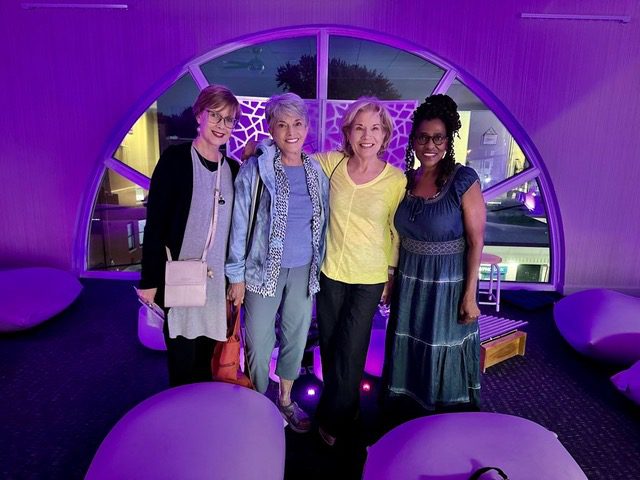
My introduction to sound healing came through a friend of a friend. Monique Mead is a violinist with the Pittsburgh Symphony, an accomplished musician who has a passion for using music to induce the positive feelings of relaxation. She’s a neighbor of my friend Pam, who during the pandemic, had joined with Monique and other musicians and neighbors to hold outdoor porch concerts in their neighborhood during the summers when everyone was house bound. Once it became possible to gather indoors, Monique established and outfitted a place to hold sound healing sessions. As I had been researching and writing about how music and singing help us process loss and feelings of grief, I couldn’t wait to try out this simple edgy method of what might be labeled self-healing.
Monique’s sound healing studio is designed to delight all of our senses. The scent of aromatherapy greets us as we step off the elevator and the high ceiled light filled room outfitted with comfortable loungers invites us in to lie down and get comfortable for our one hour of deep relaxation.
Sound does not come to us just through our ears. As friends and I experienced last weekend at a group session, sound is physically felt through vibrations in the body. As the human body is 75% water, our bodies are great conductors of the vibrations created by musical instruments. Monique plays, in addition to her violin, Tibetan and crystal bowls, a gong, bells, and an ocean drum, and maybe some others I didn’t identify. Our bodies vibrate at the same frequency as the sounds produced by the musical instruments, so as Monique plays, physical and emotional tensions held in the body release. Scientists would say that the sound frequencies slow down brainwaves to a restorative state, which activates the body’s self-healing system.
My personal experience of this was that during the first sound bath session, my awareness of an area of my upper jaw where I knew I had chronically held tension in years past was heightened. The sensation was not at the level of pain, but definitely uncomfortable. As the session progressed, the sensation diminished, and by the end, it was completely gone.
With this encouragement, a few weeks later I went back for another session where this time, the sensation of tension returned in the same place, but it was much less prominent, and it dissipated more quickly. During my third session Friday evening, where I brought several friends with me, the sensation and tension did not occur at all. But something else quite remarkable did. By the middle of the third session, in the place where those tense sensations had been I began feeling a sensation of openness, like the cells had room to breathe. I thought, “Is this how my upper jaw is supposed to be? Is this the normal vibratory frequency of these cells when I’m not unconsciously clamping down on them?”
Text messages from the friends that accompanied me to the session streamed in the following morning. “Slept great!!” (From someone who can’t make that statement often.) Another– “Two months ago: Diagnosis bursitis, right shoulder. Last night & today: 90 percent improvement in pain reduction and range of motion. Sound Healing! Hallelujah!” A third– “Thank you for organizing us!”
In the interest of full disclosure, my friends and I spent time together after the session, and our individual outcomes may have been influenced by a phenomenon known to bio musicologists as entrainment-the synchronization of organisms to an external rhythm. To psychologists, entrainment is defined as the adjustment or moderation of one’s behavior to synchronize or be in rhythm with another’s behavior. “Group Sound Healings! Hallelujah!”
Visit Monique’s website to learn more
https://moniquemead.com/wellness/sound-healing
How About Looking to Music as Medicine
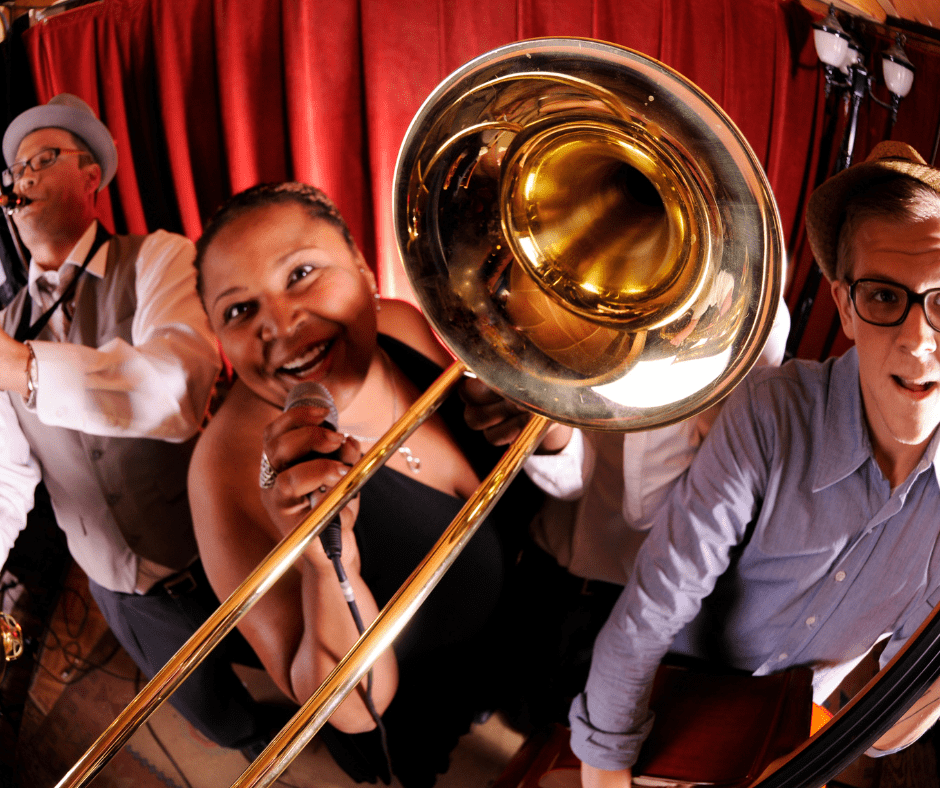
Grandsons Ethan and Will were nine and six years old, respectively, when I watched their mother interrupt a fight they were having. She had clearly done this before, and I saw that she had some skill in getting the boys to each look at the situation from the other’s point of view. After some discussion, she instructed them to each apologize to one another. Ethan, the eldest, went first. With his head cocked to the side, in a soft voice he said, “I’m sorry.”
Will came back quickly and strong with, “Oh, no you’re not! You’re just over there singing to yourself.”
I was able to stay in my role as fair witness, but it was hard not to laugh and somewhat agree with Will because I knew that, as a musically inclined child, Ethan did sing to himself often. I’ve always wondered if that’s how he kept himself in such an even-tempered and emotionally positive place.
Those boys are grown men now. There are many principles I hope I have shared with our next generation, many truths I would like them to remember and embody, with one of the most important being that the capacity of music to facilitate a change in one’s emotional state is enormous. As we know from African American spirituals, known as “sorrow songs,” and from a more recent form of music, the blues, music can express for us the emotions inherent in our troubles, and take us in a progression from negative to positive, from discordant to resolved.
My friend Mitch, a musician and composer who earned his living as a mathematician and mathematics professor, shared his noticing that music can sometimes make us laugh. “If you’ve ever been part of a jazz group or witnessed one close-up, you’ve probably seen times when one player performs a solo and the other members of the group let out a chuckle, along with murmurs of approval.”
He asks, “What’s that about? There were no words. Nobody did a pratfall. Somehow the music itself told a joke. The notes leading up to the joke were a set-up, getting our heart in the right place to be tickled.” And then he points us to classical music. “It works the same way. Check Rachmaninov’s Rhapsody on a theme by Paganini. It tickles.”
My InterPlay colleague Rebecca, a pianist, describes music as medicine. “When I was a kid, I felt music understood me in a way that people couldn’t—understood longings and sorrows I couldn’t possibly put into words.” We talked about the message of reassurance in the chord resolution, which is when the chord resolution brings us home, usually back to where we started.
Being in a choir or chorus has been a central part of my friend Cathy’s social/emotional life since middle school, but now as an elder, taking care of her 96-year-old mother, and with the restrictions of Covid, she hasn’t found a replacement for singing in her present life. “I sing in the car but it’s not the same.” She mentioned she had been experimenting with the vocal form toning, a kind of sound healing, to “recalibrate” her energy level. That word caught my attention, and I looked it up and read its definition our loud. “To adjust the gradations or settings on a piece of precious equipment.” We both laughed and agreed that our bodies, minds, and spirits could be considered pieces of precious equipment. And music just might be a way to recalibrate our losses from the past and our expectations for the future.
So, as we wish for something better in times of grief and loss, we can look to music and singing to provide a way to honor our struggles, and make our lives feel better, even if nothing has changed in our objective reality.

